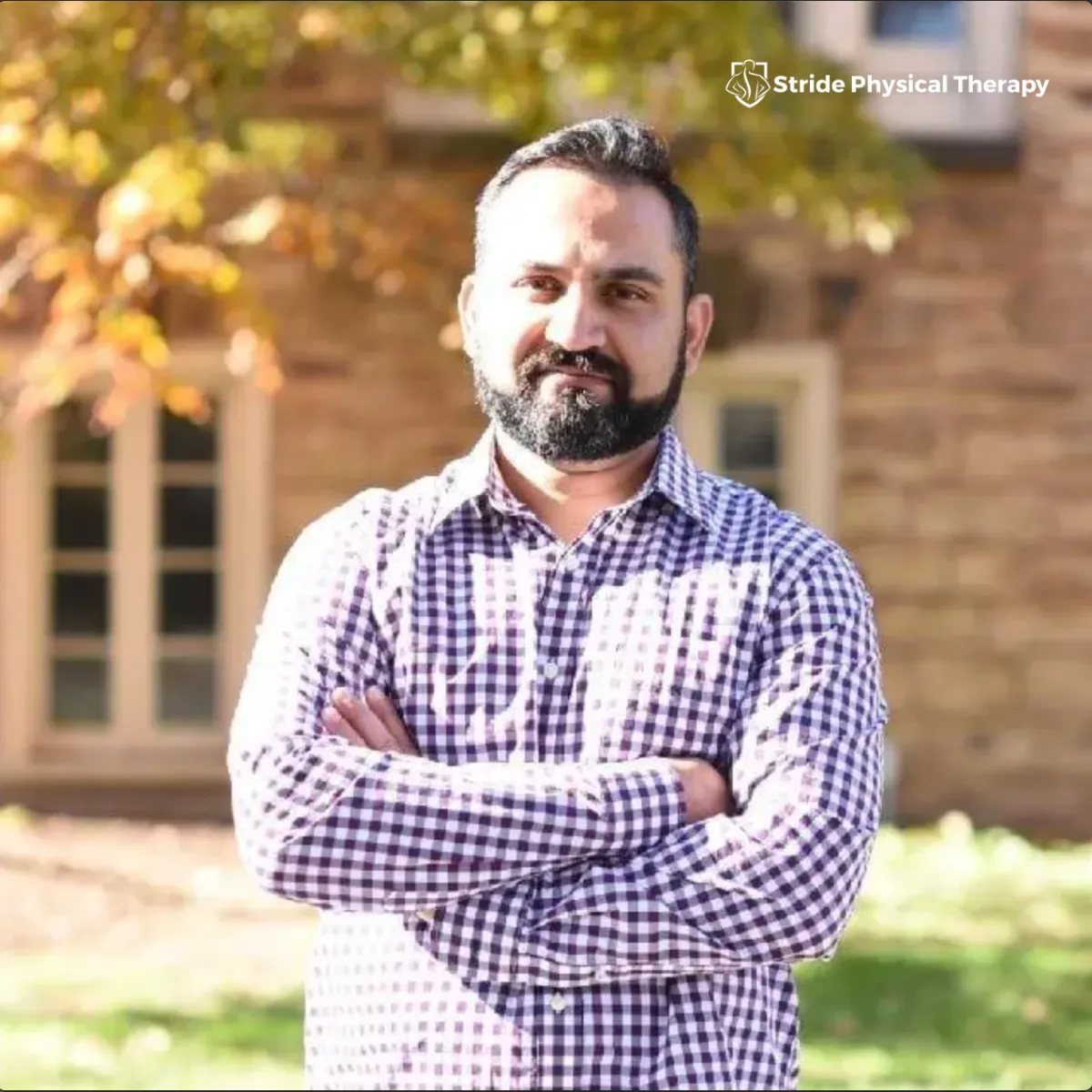The plantar fascia is a slim, strong band that runs beneath your foot, forming the arch. It stretches from your heel to your toes.
Plantar fasciitis is when the plantar fascia, a band in your foot, gets inflamed from too much stretching or usage, leading to heel and foot pain. This can affect one or both feet, often happens from standing a lot, and is a typical foot problem for active men aged 40 to 70.
Causes of Plantar Fasciitis
Plantar fasciitis is when the plantar fascia ligament gets strained or irritated. Constant strain might cause small tears in the ligament, causing pain and swelling that makes walking hard.
Strains can result from:
1. Having a very high or low arch in your foot.
2. Being overweight or quickly gaining weight.
3. A stiff Achilles tendon, the link between your calf and heel.
4. Beginning a fresh activity or boosting its difficulty.
5. Poor footwear choices like too soft soles, ill-fitting shoes, or inadequate arch support.

Quick Links
FAQs
Symptoms of Plantar Fasciitis
Plantar fasciitis typically causes heel and foot pain and stiffness. This pain is usually worse:
1. When you first get up in the morning.
2. If you walk after long periods of sitting or standing.
3. When going up stairs.
4. Following exercise.
Diagnosis
Your doctor can diagnose plantar fasciitis by discussing your medical history and checking your foot for pain, firmness, or redness on the bottom. They might observe how you stand and walk and look into other factors like high arches.
Your doctor may request foot X-rays to check for a stress fracture (a tiny crack in the bone), or conditions like a heel spur, an excess buildup of calcium on the heel bone.
Treatment for Plantar Fasciitis
Treatment includes simple steps to ease the condition. These steps are: 1. Rest: Begin with rest, which helps lessen pain and protects the ligament from more harm.
2. Ice: Apply ice by rolling your foot over it. Do this for 20 minutes, 3-4 times daily, to decrease swelling.
3. Medications: NSAIDs can be used to ease pain and lessen inflammation.
4. Exercise: Try calf and plantar fascia stretches to alleviate pain.
5. Steroid Injection: An injection may be given in the plantar fascia to lessen pain and swelling.
6. Shoes & Orthotics: Supportive footwear and orthotics can make walking or standing more comfortable.
7. Night Splints: Your doctor may advise wearing night splints to stretch the plantar fascia during sleep.
8. Physical Therapy: Learn stretching exercises, massage techniques, and ice applications.
9. ESWT: Physical therapists might use shockwave impulses to help heal the plantar fascia.
Surgery for Plantar Fasciitis
Surgery is an option if after a year, other treatments haven’t helped. The type of surgery you'll get depends on your specific case.
Gastrocnemius recession surgery lengthens tight calf muscles to reduce strain on the plantar fascia. Your surgeon will make your calf muscle longer, improving ankle movement. It's done with an open cut or through a tiny cut using an endoscope, a camera-equipped tool.
Plantar Fascia Release: Should you retain good ankle movement but still suffer from heel pain, we suggest a partial release surgery. In this, your surgeon will delicately slice a portion of your plantar fascia ligament to lessen the strain. While this operation can be done using an endoscope, the open incision method is simpler and carries a reduced likelihood of harming nerves.
Risks and Complications
Surgery for plantar fasciitis is usually safe, but like all surgeries, risks exist. Possible issues include:
1. Infection.
2. Nerve damage.
3. Persistent pain.
MEET YOUR RECOVERY TEAM

Kanwal Bhardwaj
PT, M.Sc.PT, CIMT, CMNT
Meet Kanwal Bhardwaj, PT, M.Sc.PT, CIMT, CMNT, the driving force behind Stride Physical Therapy in Freehold, NJ. With over 20 years of dedicated experience in the field, Kanwal brings a wealth of expertise and a passion for holistic healing to his practice. Kanwal's journey began with a Master of Science in Orthopedic Physical Therapy from Quinnipiac University in 2004. Over the years, he honed his skills and gained invaluable insights during 18 years of service in outpatient physical therapy offices. In 2014, fueled by a desire to deepen his understanding of patient care, he pursued a manual therapy certification (CIMT). This transformative experience allowed him to adopt a whole-body perspective, focusing on treating the root cause rather than just the symptoms...
At Stride Physical Therapy, we're dedicated to transforming lives. With a focus on the root cause of your condition, we're here to help you regain mobility and embrace an active lifestyle. What sets us apart? Our genuine passion for what we do. Let's stride towards a brighter tomorrow together.
Elevate Your Health with Our All-Inclusive Wellness Services!
Take one step closer to a pain-free life with Stride Physical Therapy! Discover medication and surgery-free solutions with our sessions.
Health Blog

Looking to Improve Your Physical Health? Here are 6 Ways Physical Therapy Can Help
Are you struggling because of poor physical health? Your body's fitness is deeply connected to your happiness and mental state. Mayo Clinic research shows that active people often have longer lives and enjoy perks such like losing weight, building muscles, and having better health in general.
It might be tough to start exercising more, but a physical therapist can make it easier. Discover how Stride Physical Therapy's physical therapy can enhance your health:
1. Physical Therapy Treats Both Acute and Chronic Pain
Physical therapy helps greatly with both sudden and long-term pain. MoveForwardPT says that being more active can make you feel up to 28% less pain. When patients know why they hurt and how therapy will assist them, they're more apt to find relief from their pain through treatment.
2. Physical Therapy is a Safe, Natural, and Non-Invasive Option
Physical therapy offers a safe and non-invasive alternative to pain management, reducing the need for pain medications and surgery. It lowers the risk of infections, complications, and side effects, presenting a safer option than opioids and surgical treatments.
3. Physical Therapy Decreases the Risk of Injuries and Cardiovascular Problems
Strengthening muscles and joints through physical therapy can reduce the risk of injuries in everyday activities. Stronger muscles recover faster, decreasing the likelihood of repetitive stress injuries. An active lifestyle also helps protect against major health issues like stroke and heart attack.
4. Physical Therapy Helps Heal Damaged Tissues
A 2018 study by the American Physical Therapy Association (APTA) found that physical therapy holds promise in treating tissue damage, such as meniscal tears. This suggests additional benefits for other tissue injuries, helping those with injuries or a history of injuries improve stamina and overall function.
5. Physical Therapy Provides Energy Boosts
Physical therapy improves range of motion and activity levels. According to Harvard Health Publishing, increased activity is linked to higher energy levels. Patients with pain often experience greater mobility and energy with less discomfort through physical therapy.
6. Physical Therapy Enhances Mood and Reduces the Risk of Mental Illness
Physical therapy and consistent exercise improve your mental well-being and brighten your mood, says the National Institutes of Health. Feeling better mentally can decrease your chances of suffering from anxiety, depression, and other emotional challenges. Plus, if you're in good mental shape, you're less prone to pain and swelling.
Start enjoying these benefits in your life now!
Physical therapy boosts health naturally, steering clear of drug side effects. Get the full perks safely with a qualified therapist. Choose Stride Physical Therapy in Freehold, NJ, for better health!
Need more info or ready to book? Visit our site or ring us up. Take the first step towards a healthier, painless life with Stride Physical Therapy.


